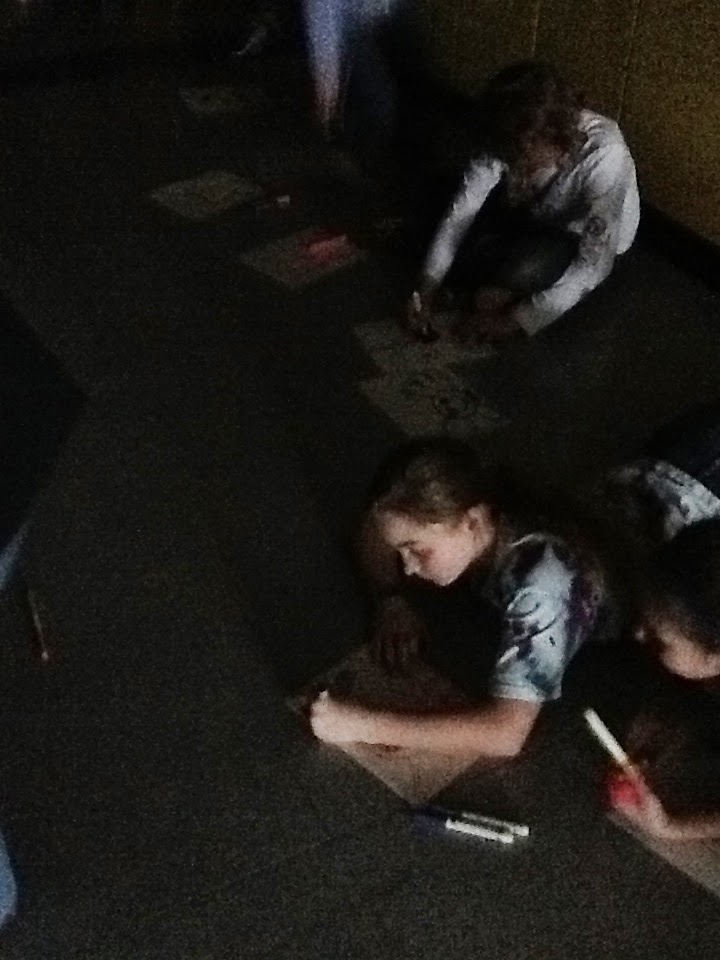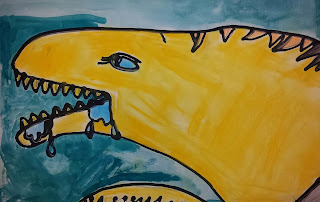 |
| Power outage at our school proved for an interesting afternoon. |
Yesterday marked a first for me in my nearly 11 years of teaching. A two hour power outage for our entire district. A power outage might not seem like a huge deal, but imagine teaching art in a classroom without windows. PITCH BLACK DARKNESS right in the middle of painting with my third graders.
With only 20 minutes left of class I managed to gather all the children to the carpet area and come up with a few time fillers (I read a couple poems by flashlight and then we played a counting game called 10).
After the class left I struggled to pick up the paints, water buckets and paintings with one hand while my other hand held my only light source (a tiny double A battery flashlight).
In the middle of cleaning up I was surprised to discover that even though my room was darker than India Ink, I was still going to have to teach my last class for the day.
I knew that my original plan of painting our masks was not going to be a possibility, so I quickly fell back on a lesson that I save for the end of the year: How To Draw A Zippo. It is basically a listen and draw exercise.
Since there was more light in the hallway then in my room, I set up my temporary room in the hall. This set up proved to be very interesting and challenging on many levels, but we made it through the adventure. I am sure the children will never forget the day they had art class in the dark. For me? It will be a teaching day that I will remember always, but I also, feel tremendously relieved and excited that when our new school is built I will have WINDOWS in my new classroom!
 |
| Creations from my students. Not too bad for drawing in the dark! |
























































